The Only Vegan Pumpkin Soup Recipe You’ll Ever Need
I’ve spent a lot of time in professional kitchens, and let me tell you, soup is one of those things that really separates the pros from the amateurs. It seems so simple, right? But getting that deep, layered flavor and a texture that feels like velvet… that takes technique. This vegan pumpkin soup is the result of many, many autumns of tweaking and perfecting.
In this article
So many recipes out there just have you toss everything in a pot and boil it. The result? A watery, sad soup that tastes like hot pumpkin baby food. We’re not doing that. I’m going to walk you through the methods that create a truly memorable soup, explaining the why behind each step. By the end, you won’t just have a recipe; you’ll have the confidence to make this soup your own.
The Magic Behind the Flavor (A Little Kitchen Science)
Understanding what’s happening in the pot is the key to cooking with intention. A genuinely great pumpkin soup comes down to three things: getting a deep roast, using starches smartly, and creating a rich, dairy-free creaminess.
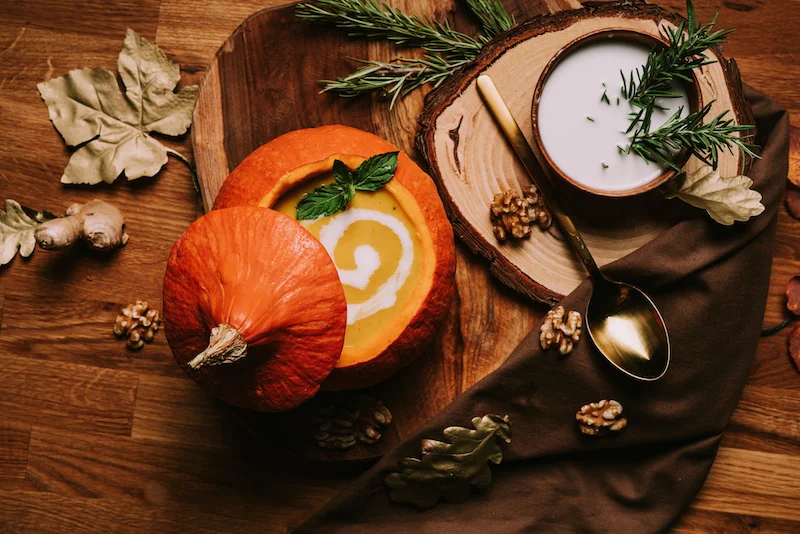
Why Roasting Is a Non-Negotiable Step
Honestly, if you take away one thing, it’s this: you have to roast the pumpkin. Boiling it just makes it soft and watery. Roasting, on the other hand, is pure magic. When you roast a pumpkin at around 400°F (200°C), you kickstart something called the Maillard reaction. It’s the same glorious chemical reaction that browns your toast and gives a sear to a steak. It creates hundreds of new flavor compounds that are nutty, sweet, and deeply savory.
Plus, the dry heat of the oven pulls excess water out of the pumpkin, concentrating its flavor and natural starches. This is mission-critical for getting that thick, luxurious texture later on.
How We Get That Creamy Texture Without Any Cream
Creaminess is all about mouthfeel. In our case, we’re leaning on two power players: starch and fat.
First, the starch. Pumpkins and carrots are loaded with it. As they simmer in the broth, their starch granules soak up liquid and swell. When you hit them with a blender, these swollen granules burst, releasing starch molecules that naturally thicken the soup. It’s a built-in thickener!
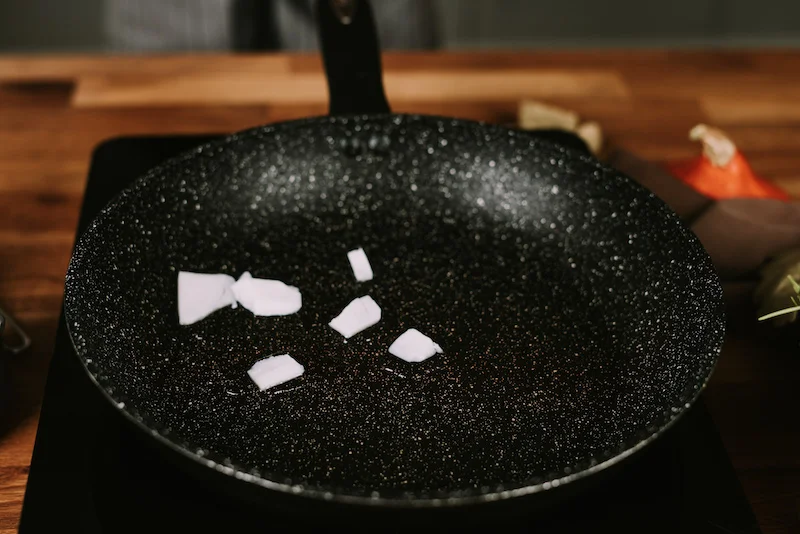
But for that truly velvety finish, you need fat. This is where full-fat coconut milk comes in. A powerful blender breaks down the fat into microscopic droplets, suspending them evenly throughout the soup. This is called an emulsion, and it’s what gives the soup its rich body and beautiful pale-orange hue. We’ll also touch on homemade cashew cream later, which is a total game-changer.
Choosing Your Star Player: The Pumpkin
Okay, heads up! Your choice of pumpkin or squash makes a HUGE difference. Please, do not use those big jack-o’-lantern pumpkins. They’re bred for size, not for eating, and their flesh is stringy, watery, and bland.
Instead, look for smaller, dense culinary varieties at your grocery store or local farmer’s market. Here are my top picks:
- Sugar Pumpkin (or Pie Pumpkin): This is the classic for a reason. It’s reliably sweet with a smooth, fine-grained flesh. A fantastic, easy-to-find choice that usually costs around $1.50 per pound.
- Kabocha Squash: My personal favorite. The first time I made soup with this, my mind was blown. It has an incredible nutty, almost chestnut-like flavor, and the flesh is super dense and starchy. This makes for the thickest, most flavorful soup. Oh, and the best part? The skin is edible when roasted, so you don’t even have to peel it! It might cost a dollar or two more than a sugar pumpkin, but you get more bang for your buck since there’s less water weight.
- Butternut Squash: A wonderful, widely available alternative. It’s sweet and nutty with a silky-smooth texture. It’s a little less starchy than kabocha but still makes a delicious soup. Just be prepared for a bit of a workout; its skin is the toughest to peel of the three.
When you’re picking one out, go for one that feels heavy for its size. That’s a good sign of dense, flavorful flesh. Steer clear of any with big soft spots or cracks.
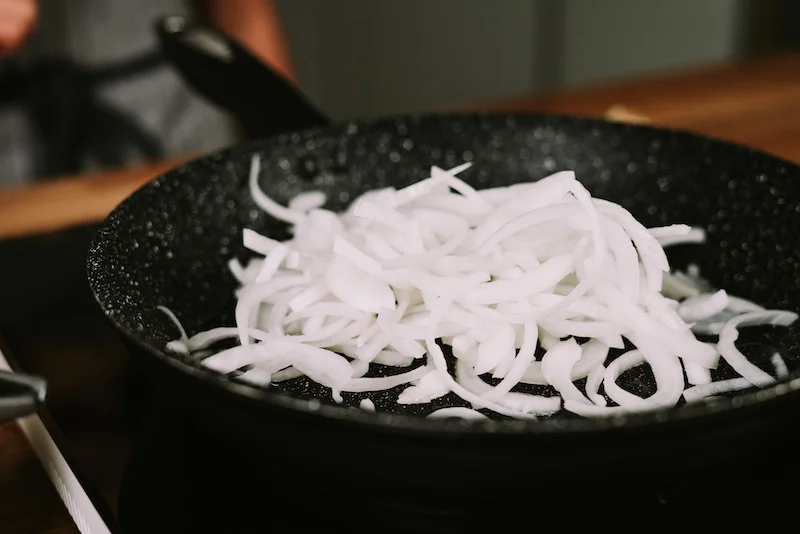
The Core Recipe: Your Go-To Blueprint
Think of this as your starting point. Once you nail this, you can start getting creative. A quick heads-up on time: plan for about 1 hour and 30 minutes from start to finish. Most of that is hands-off roasting time, though!
Yield: About 8 cups (2 quarts), serving 6-8 people
Total Time: Approx. 90 minutes
What You’ll Need:
- 1 medium (around 2.5 lb) sugar pumpkin or kabocha squash
- 1 tbsp coconut oil or other neutral oil (like grapeseed or avocado)
- 1 large yellow onion, chopped
- 2 medium carrots, chopped
- 3 cloves garlic, minced
- 1-inch piece of ginger, peeled and finely grated
- 1 tsp ground cumin
- 1/2 tsp ground turmeric
- 4 cups (1 liter) high-quality vegetable broth. (Quick tip: I prefer low-sodium boxed broth like Pacific Foods, but a good bouillon paste like Better Than Bouillon also works wonders. The key is to control the salt yourself!)
- 1 sprig of fresh rosemary or a few fresh sage leaves
- 1 can (13.5 oz) full-fat coconut milk (And seriously, don’t use the light stuff—all the creaminess comes from the fat!)
- Salt and freshly ground black pepper
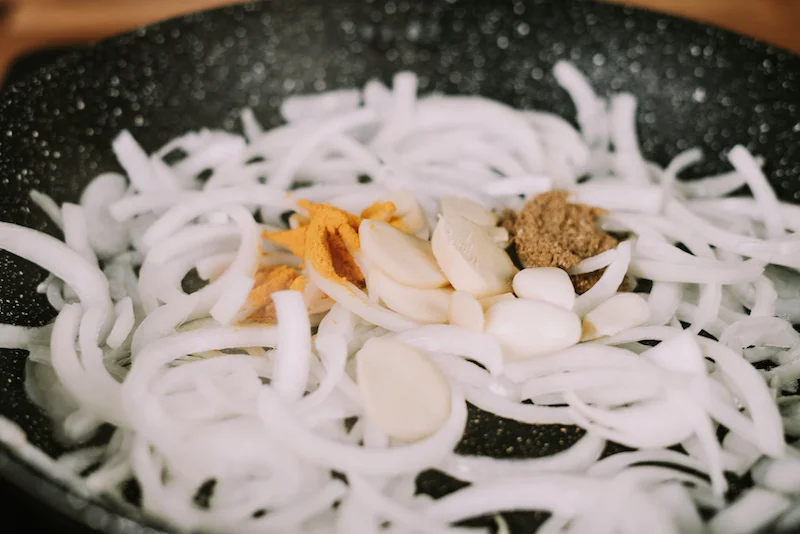
Step-by-Step Guide:
- Get Roasting: Preheat your oven to 400°F (200°C). To prep the pumpkin safely, place a damp towel under your cutting board so it doesn’t slip. Carefully cut the squash in half and scoop out the seeds. Rub the cut sides with a little oil and season them generously with salt and pepper. Don’t be shy—about 1/2 teaspoon of kosher salt per half is a good start. Place them cut-side down on a parchment-lined baking sheet and roast for 40-60 minutes, until a knife pierces the flesh with zero resistance.
- Build the Base: While the pumpkin roasts, heat the coconut oil in a large Dutch oven or heavy pot over medium heat. Add the onion and a good pinch of salt. Cook for 5-7 minutes, until the onions are soft and sweet.
- Layer the Aromatics: Toss in the garlic and ginger and cook for just a minute until they smell amazing. Now, add the cumin and turmeric. Stir constantly for about 30 seconds. This is called “blooming,” and it wakes up the spices. Your kitchen should smell incredible.
- Simmer Down: Add the chopped carrots, the roasted pumpkin flesh (just scoop it out of the skin), the vegetable broth, and the rosemary sprig. Bring it to a boil, then lower the heat and let it simmer for 15-20 minutes, until the carrots are super tender.
- Blend It Up: Remove the pot from the heat and fish out the rosemary sprig. Stir in the can of coconut milk. Now, blend it. An immersion blender is the easiest way. If using a countertop blender, BE CAREFUL. Hot liquid can create pressure. Never fill it more than halfway, remove the little plastic cap in the lid to let steam escape, and cover the opening with a folded kitchen towel. Start on low and slowly ramp up the speed.
- The Final Touch: This is the most important step! Taste the soup. Add salt until the flavors pop. Add a few grinds of black pepper. Adjust it until you love it.
- Serve: Ladle the hot soup into bowls and add a garnish for some texture and flair.
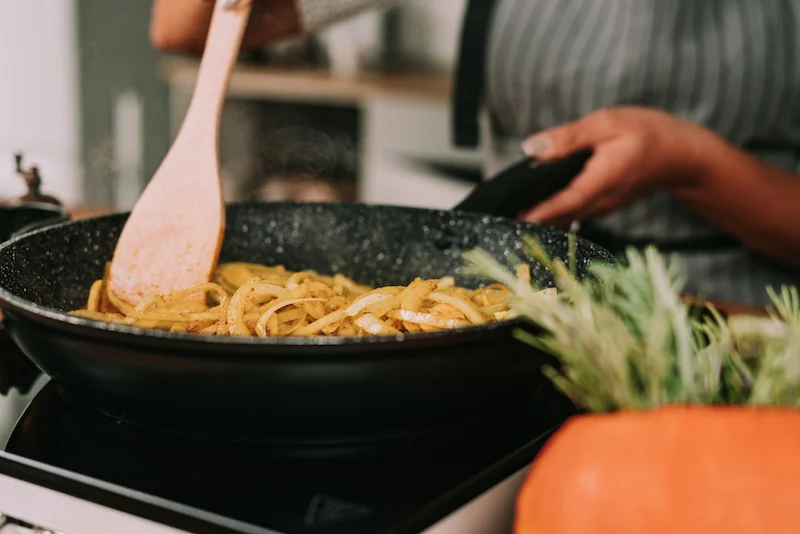
Kitchen SOS: Quick Fixes for Common Problems
Things don’t always go to plan, and that’s okay! Here’s how to troubleshoot.
- My soup is too thick! Easy fix. Just stir in a splash more vegetable broth or even hot water until it reaches a consistency you like.
- My soup is too thin! If you’ve already blended it, the best way to thicken it is to let it simmer gently on the stove with the lid off for 10-15 minutes. Some of the water will evaporate, and it will thicken right up.
- My soup tastes bland… This almost always means one thing: it needs more salt! Salt is a flavor enhancer, not just a salty taste. Add it little by little, tasting after each addition, until the pumpkin and spice flavors really sing. A tiny squeeze of lime or a dash of apple cider vinegar can also brighten things up.
Ready to Riff? Fun Ways to Change It Up
Once you’ve got the base recipe down, you can take it in all sorts of delicious directions.
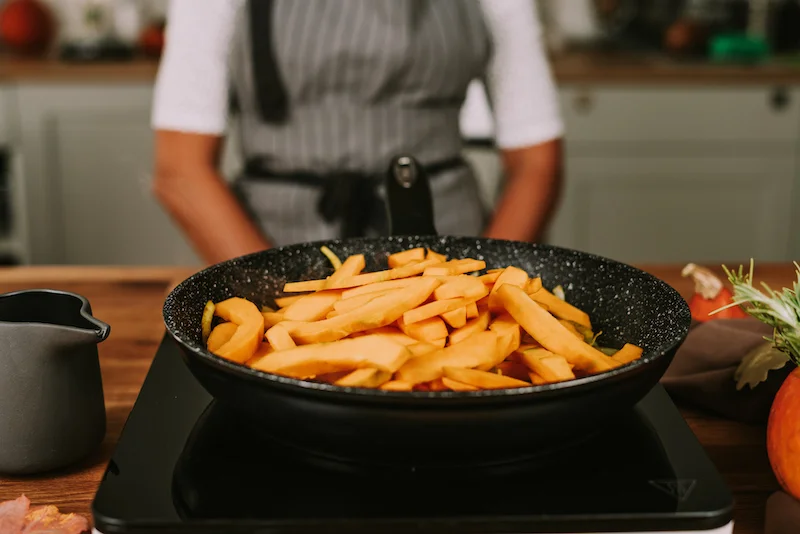
For a Thai-Inspired Twist:
Add 1-2 tablespoons of red curry paste when you sauté the onions, and skip the cumin and turmeric. Instead of rosemary, simmer the broth with a bruised stalk of lemongrass. Finish with a big squeeze of fresh lime juice after blending. Garnish with fresh cilantro and chopped peanuts.
For a Classic Autumn Vibe:
Lean into those cozy fall flavors. Add a pinch of nutmeg and cinnamon along with the cumin. Use fresh sage instead of rosemary. After blending, stir in a tablespoon or two of real maple syrup to play up the pumpkin’s natural sweetness. Toasted pepitas (pumpkin seeds) are the perfect garnish here.
Level-Up Your Soup Game
Want to make this soup truly high-end? A couple of pro tricks can elevate it even further.
Homemade Cashew Cream: For the most luxurious, neutral-flavored creaminess, make your own cashew cream. Just soak 1 cup of raw cashews in boiling water for 30 minutes. Drain them, then blend in a high-speed blender with about 1/2 to 3/4 cup of fresh water until it’s perfectly silky smooth. Use this in place of the coconut milk. It’s next-level.
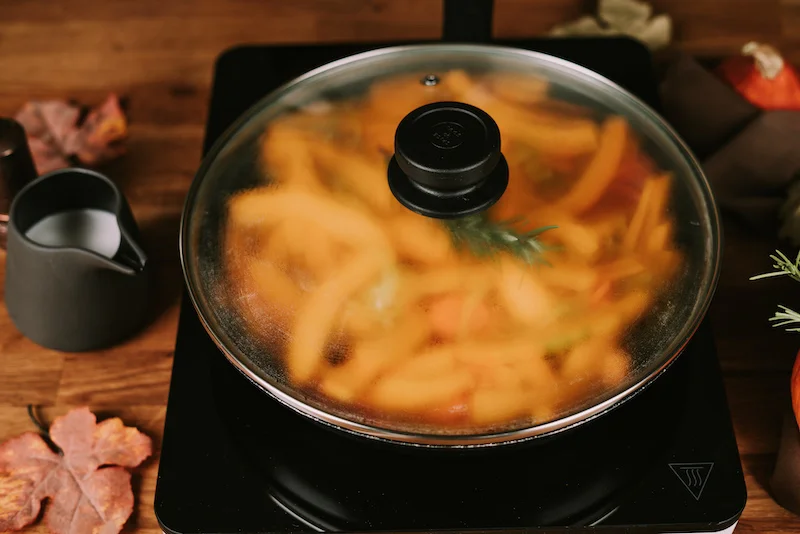
The Garnish Is Half the Fun: A creamy soup practically begs for a crunchy topping. Try frying whole sage leaves in a little oil until they’re crispy, or toast some pumpkin seeds with smoked paprika and a pinch of chili powder.
Good to Know: Storage, Safety & Shortcuts
This soup is fantastic for meal prep. It’ll last in an airtight container in the fridge for up to 5 days. It thickens up when it’s cold, so just add a splash of broth when you reheat it gently on the stove. It also freezes beautifully for up to 3 months.
In a hurry? Let’s be real, sometimes you don’t have time to roast a whole squash. You can absolutely use canned pumpkin purée. Just grab a 29-ounce can of 100% pure pumpkin (not pie filling!). To build back some of that roasted flavor, try adding 1/2 teaspoon of smoked paprika with the other spices. Another great shortcut is buying pre-cubed butternut squash from the produce section. It saves a ton of prep work, but it can be a little drier, so you might find you need a bit of extra broth.
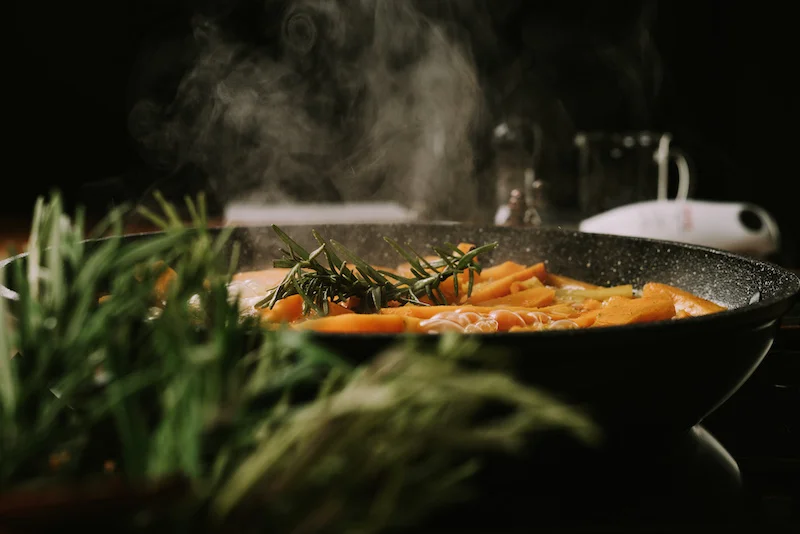
Inspiration:
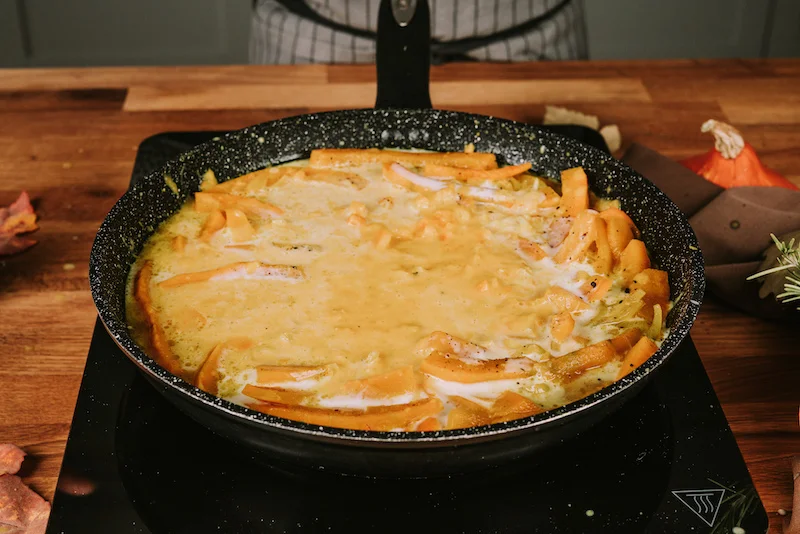
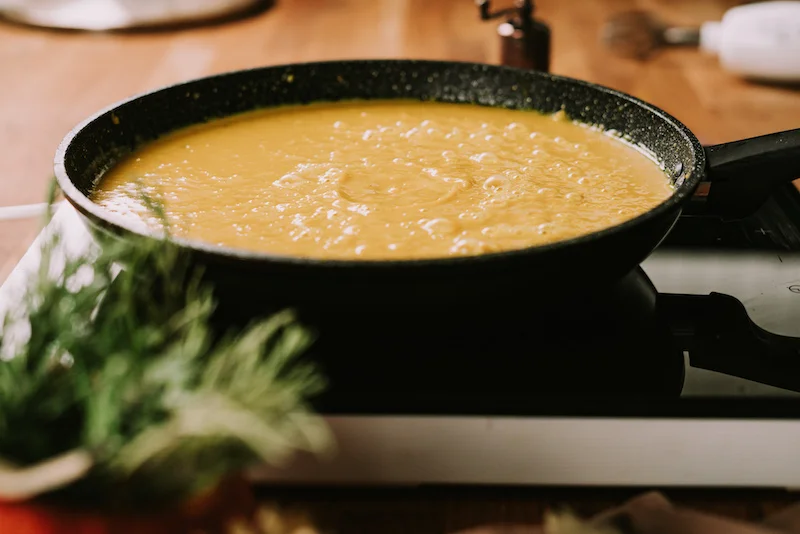
The secret to an exceptional soup begins before you even turn on the oven. The variety of pumpkin you choose makes all the difference.
- Best for Roasting: Look for smaller, dense ‘Sugar Pumpkins’ or ‘Pie Pumpkins’. Their flesh is sweeter and less fibrous.
- Excellent Alternatives: Kabocha squash (for its nutty, earthy notes) or Butternut squash (for its silky-smooth texture) are fantastic substitutes that deliver incredible flavor.
- What to Avoid: The large Jack-o’-lantern pumpkins are mostly water and stringy flesh; they are grown for carving, not for flavor, and will result in a bland soup.
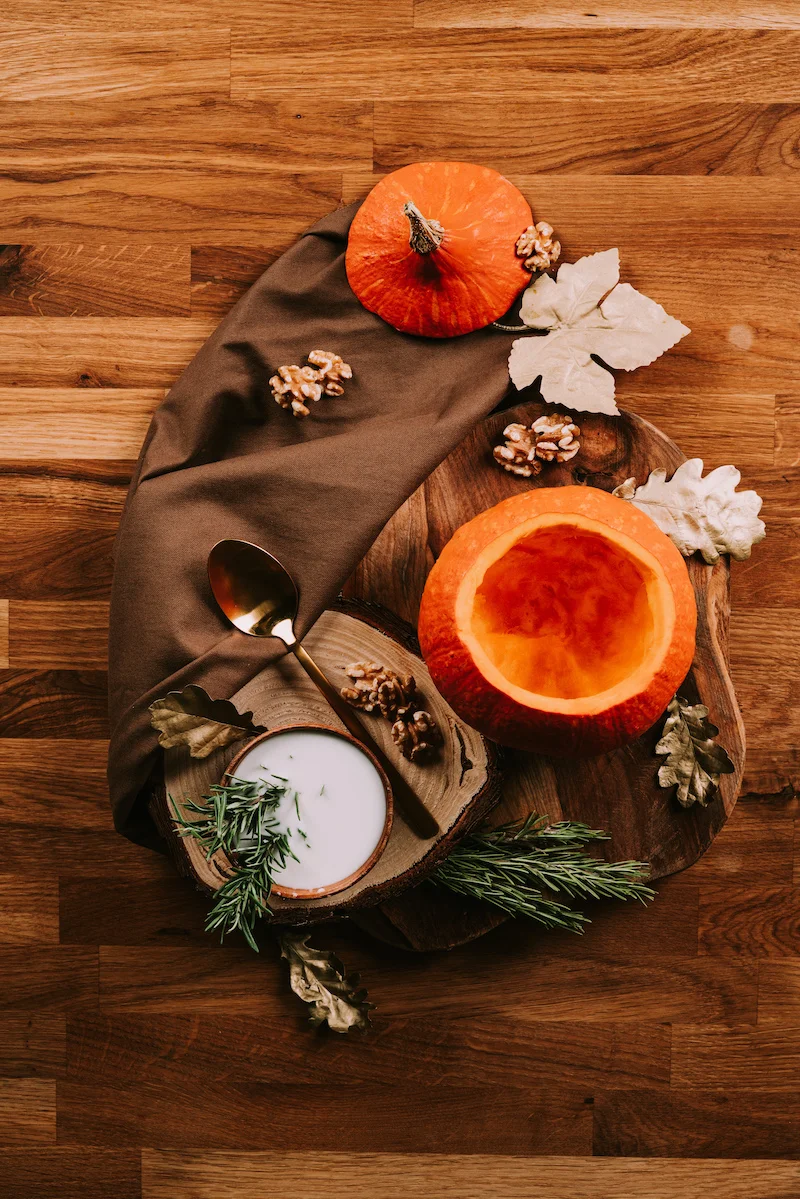
Did you know? The intense orange color of pumpkin comes from beta-carotene, a powerful antioxidant that your body converts into Vitamin A.
This means every comforting spoonful not only warms the soul but also contributes to good vision and a healthy immune system. It’s a perfect example of how delicious food can be deeply nourishing, making this soup an ideal meal for the colder seasons.
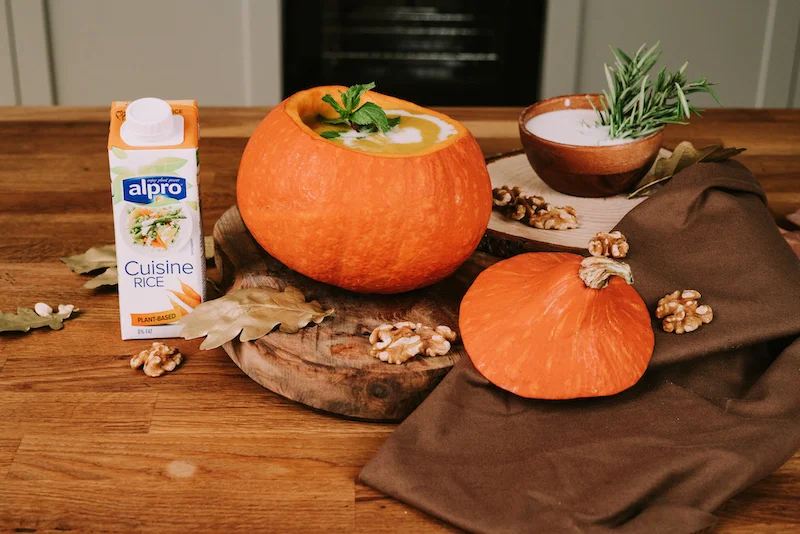
Immersion Blender: The king of convenience. Blend directly in the cooking pot for minimal cleanup. A quality model will produce a good result, though the texture might remain slightly rustic, which can be charming in its own right.
High-Speed Countertop Blender: For an utterly smooth, velvety, restaurant-quality finish, nothing beats a blender like a Vitamix or Blendtec. It pulverizes every fiber, creating a luxurious emulsion that feels incredibly rich on the palate.
Our recommendation? If you’re chasing that ‘liquid velvet’ texture mentioned in the article, the countertop blender is worth the extra step.
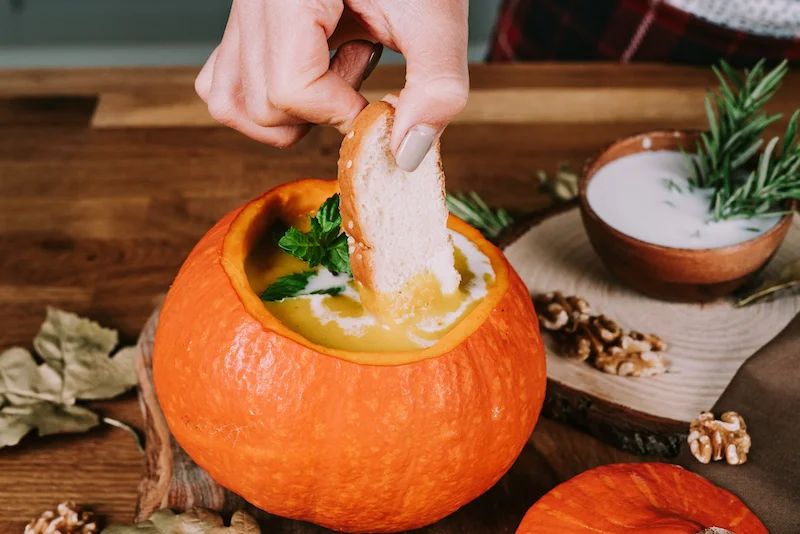
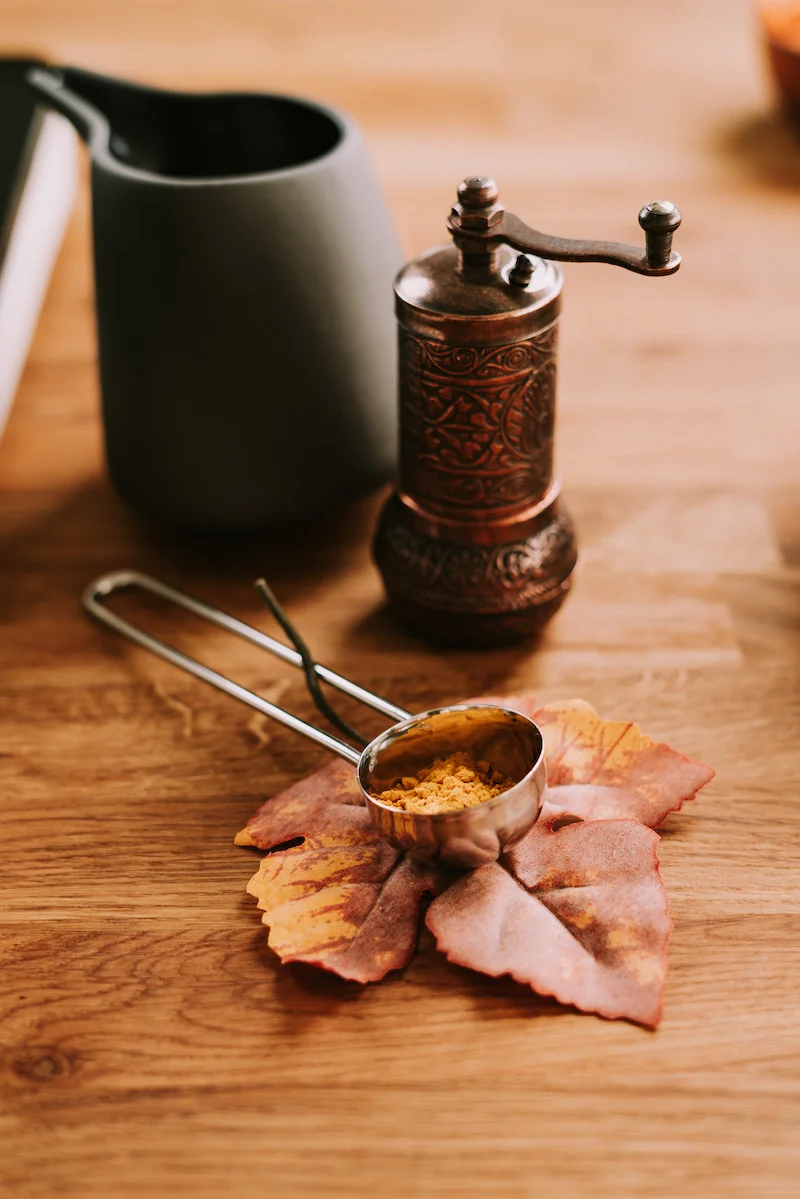
How can I add an unexpected flavor twist to my soup?
Think beyond standard salt and pepper. A pinch of freshly grated nutmeg right before serving enhances the pumpkin’s natural sweetness. For a subtle, smoky depth, add a half-teaspoon of smoked paprika along with the other spices. Or, for a warm, fragrant kick, try a small amount of Chinese five-spice powder, which beautifully complements the roasted flavor profile.
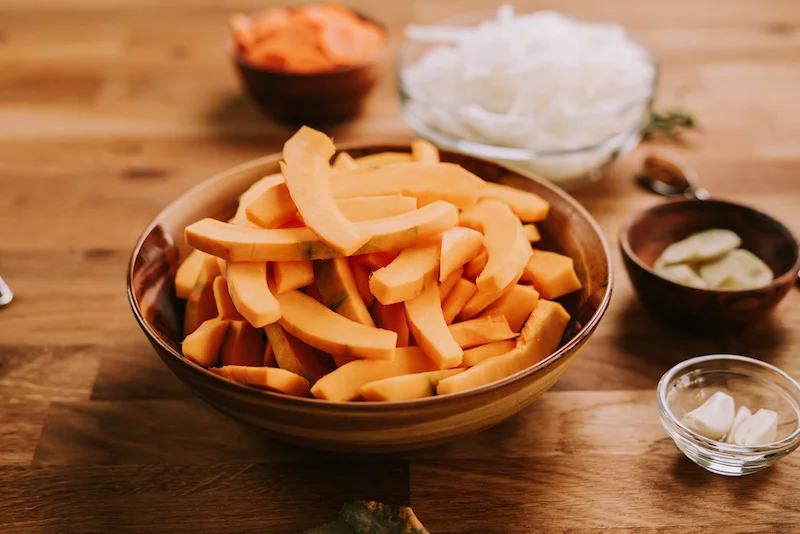
- A crunchy, salty garnish for your soup.
- A nutritious, protein-packed snack.
- A perfect zero-waste kitchen hack.
The secret? Don’t discard the seeds from your pumpkin! Just rinse them well, pat them completely dry, toss with a little olive oil and sea salt, and roast at 300°F (150°C) for 15-20 minutes until golden and crisp. They add a perfect textural contrast to the creamy soup.
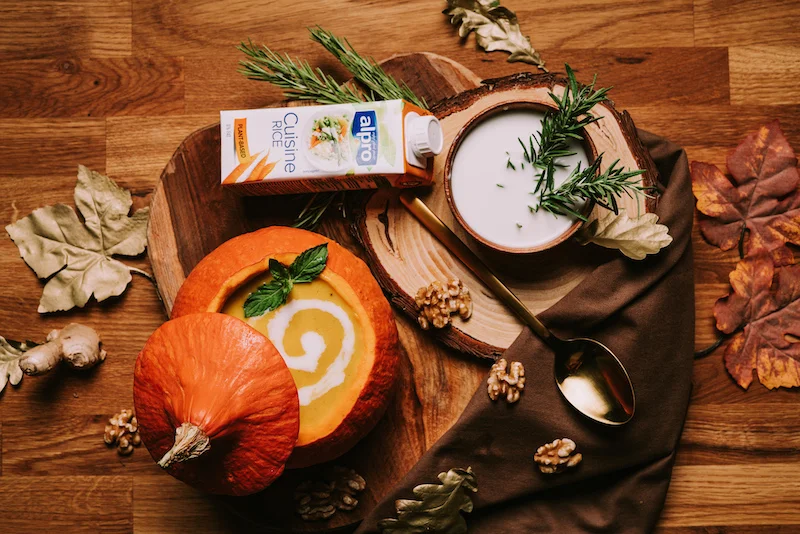
Pro Tip for Presentation: A great soup deserves a beautiful finish. Create visual appeal by playing with contrasts. A drizzle of deep green, nutty pumpkin seed oil not only looks stunning against the orange soup but also reinforces the flavor. For a touch of heat and color, a swirl of chili crisp oil works wonders. Finally, a sprinkle of flaky sea salt, like Maldon, adds a subtle crunch and a burst of clean salinity just before serving.
This soup is a fantastic make-ahead meal. In fact, its flavor often improves after a day in the refrigerator as the different notes meld together. It can be stored in an airtight container for up to 4 days. It also freezes exceptionally well for up to 3 months—just be sure to let it cool completely before transferring to freezer-safe containers.










